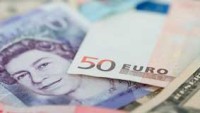 If anyone were hoping for some clarity with respect to the latest FOMC minutes they would have been sorely disappointed as all they revealed was a truly split central bank.
If anyone were hoping for some clarity with respect to the latest FOMC minutes they would have been sorely disappointed as all they revealed was a truly split central bank.
While all members appeared to agree that the economic outlook was much more certain in the wake of the “Brexit” vote, that was pretty much where the consensus ended with the remainder of the FOMC split three ways between those who are reluctant to move on rates at all, those who feel the time is getting closer, and two members who wanted to raise rates right away.
Judging from the overall tone of the minutes it would appear the reality is that a strong US dollar, combined with weakening inflation gauges appears to be preventing the Fed from pulling the trigger.
Putting that altogether and you have a perfect recipe for policy paralysis and indecision, which is a far cry from the beginning of this year when 4 rate hikes for 2016 appeared to be a view the Fed appeared keen to encourage.
From the economic data seen so far this week there appears little evidence of either a pre or post Brexit slowdown in the UK economy, in the wake of the historic June vote to leave the EU.
Unemployment to June remained at 4.9% in the lead up to the vote, while wages rose at their best rate since October last year at 2.4%, which given yesterday’s sharp rise in the RPI inflation index the resilience in wages is very welcome.
More importantly jobless claims for July actually fell by 8,900, the first decline in the numbers since February, while the employment rate came in at 74.5%, the highest level since records began in 1971.
While this is no doubt good news, it still remains too early to hang out the bunting with respect to averting any potential slowdown, but it does nail the lie somewhat that the referendum vote itself had the potential for employers to delay hiring and handing out pay rises. This clearly didn’t happen, with employment levels at their highest levels since records began in 1971.
That’s not to say that the approach of the Brexit vote didn’t prompt some caution with respect to spending patterns as the 0.9% decline in June retail sales will no doubt testify. This decline does however need to be set into the context of two months of strong gains in April and May.
For clues about what consumers did in July there is some optimism that we could see a positive number, given the decent sunny weather and the stabilisation in the political arena. There is also the fact that the July BRC retail sales numbers were quite strong, coming in at 1.1% in data released last week.
Expectations around today’s number are for a rise of 0.3% excluding fuel and autos and 0.1% including.
The recent decline in the pound, while fuelling inflationary expectations in the UK, is likely to have the opposite effect in Europe, given that the euro has risen sharply in the last few weeks.
Inevitably this will not be welcomed by ECB President Mario Draghi as he strives to push inflation higher in a slowing European economy.
Today’s EU CPI numbers are expected to reflect this with a decline of 0.5% on a month on month basis for July. While this isn’t expected to affect the annualised number, which is expected to remain at 0.2% the long term effects are likely to act as a drag in the coming months.
It also means that the ECB will come under further pressure to ease policy given the still high levels of unemployment in Eurozone countries. Today’s ECB minutes could offer some clues as to the levels of disagreement amongst ECB policymakers about even more negative rates at a time that GDP growth is slowing.
This morning’s ILO French unemployment numbers for Q2 are testament to some of these problems with the numbers expected to show a slight reduction from 10.2% from 10.1%, more than double the UK rate.
EURUSD – this week’s break above 1.1220 has seen the euro push on with the potential for a move back towards the June highs at 1.1400. In order for this upside risk to unfold we need to hold above the 1.1200 level. Below the 1.1200 area argues for a move back towards 1.1120.
GBPUSD – needs to push through resistance at 1.3070 to suggest we’ve seen a short term base at 1.2865. If the pound is able to hold above 1.2970 then we could well see a move back towards 1.3200.
EURGBP – having failed to push above the 0.8720 area in the last two days we could drift back towards 0.8610 area. A break below 0.8600 could well signal a retest of the 0.8490 area. There is fairly solid between 0.8770 and the 2013 highs at 0.8815.
USDJPY – despite yesterday’s rebound to 101.20 the US dollar is finding it difficult to rally with the recent lows at 98.95 the main focus. The risk remains skewed for a move through these lows at 98.90, and potentially lower towards 95.00, and levels last seen in June 2013.













